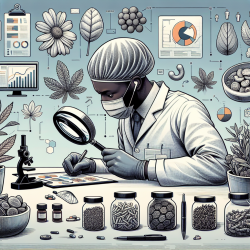Introduction
The use of medicinal herbs has been a cornerstone of traditional medicine for centuries. However, the safety and quality of these herbs are of growing concern due to mycotoxin contamination. Mycotoxins, toxic compounds produced by fungi, pose significant health risks when present in herbal products. This blog post aims to guide practitioners in improving their skills by implementing research findings on mycotoxin contamination and encouraging further exploration into this critical issue.
Understanding Mycotoxin Contamination
According to the research article "Mycotoxin Contamination Concerns of Herbs and Medicinal Plants," mycotoxins such as aflatoxins and ochratoxin A are frequently found in herbal products. These toxins often exceed regulatory levels set by the European Union, posing a risk to consumers. The article highlights the importance of enforcing existing limits and establishing stricter conditions for the growth of medicinal plants.
Key Findings and Implications for Practitioners
- Awareness and Monitoring: Practitioners should be aware of the potential for mycotoxin contamination in herbs like liquorice, chamomile, and ginger. Regular monitoring and testing of herbal products can help ensure safety and quality.
- Regulatory Compliance: Understanding and adhering to international regulations regarding mycotoxin levels is crucial. Practitioners should advocate for tighter controls and compliance with Good Agricultural and Collection Practices (GACP) and Good Manufacturing Practices (GMP).
- Education and Advocacy: Educating patients and stakeholders about the risks of mycotoxin contamination and advocating for safer herbal practices can enhance public health outcomes.
Encouraging Further Research
While current research provides valuable insights, there is a need for ongoing studies to better understand the prevalence and impact of mycotoxins in medicinal herbs. Practitioners are encouraged to engage in or support research initiatives that explore innovative solutions for mycotoxin detection and decontamination.
Conclusion
Addressing mycotoxin contamination in medicinal herbs is essential for ensuring the safety and efficacy of herbal products. By implementing the findings from current research and advocating for further studies, practitioners can play a pivotal role in safeguarding public health. To read the original research paper, please follow this link: Mycotoxin Contamination Concerns of Herbs and Medicinal Plants.










